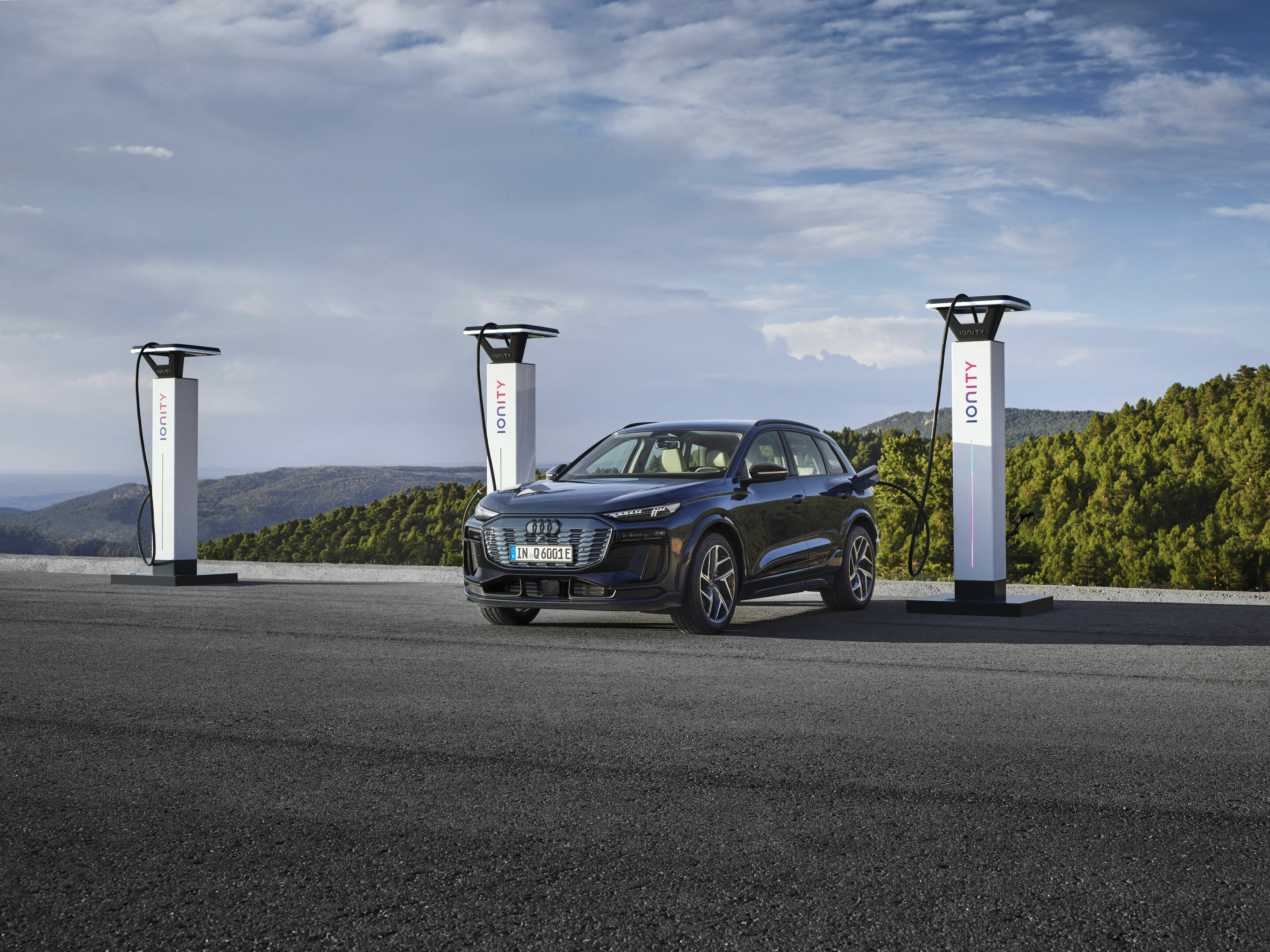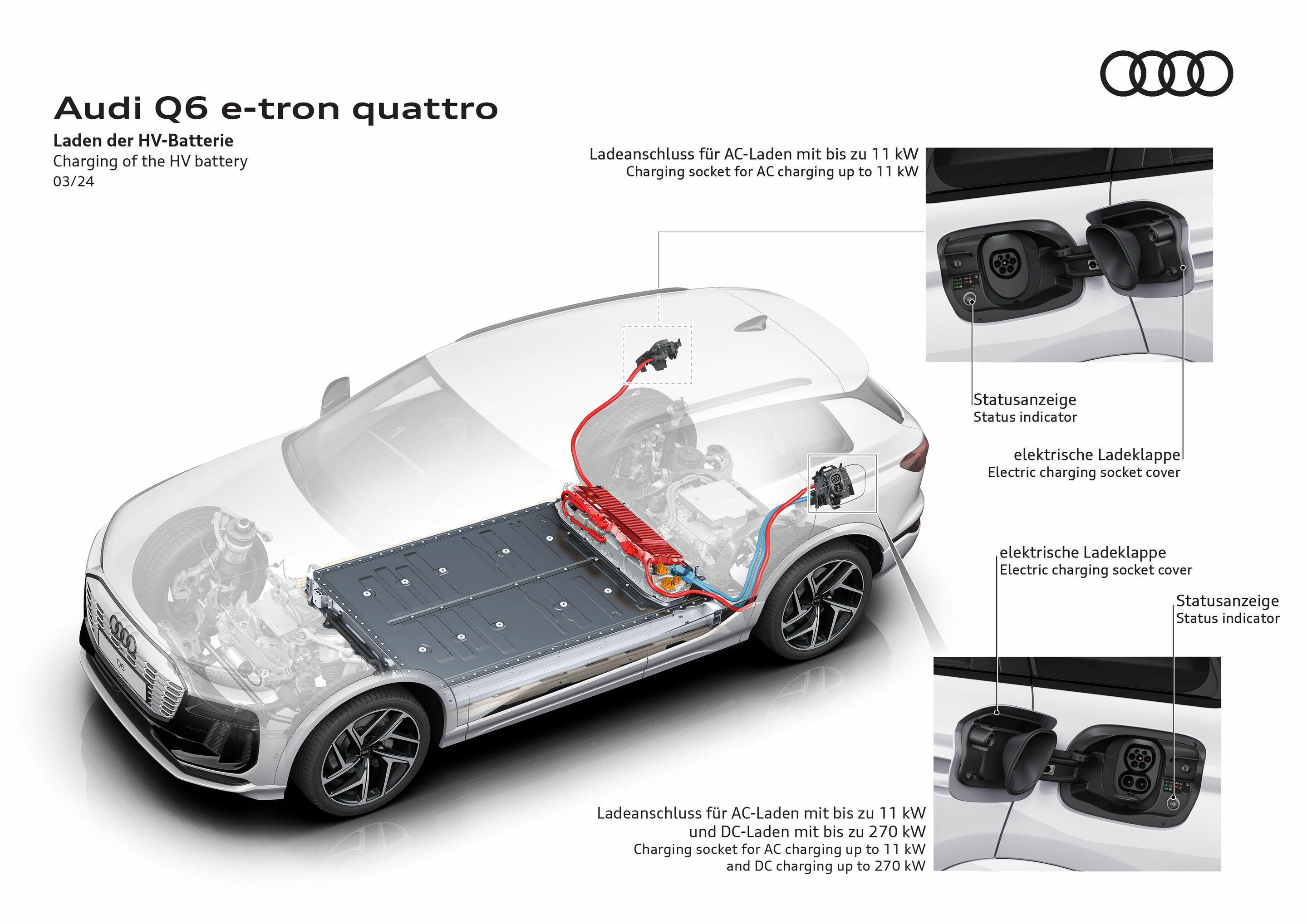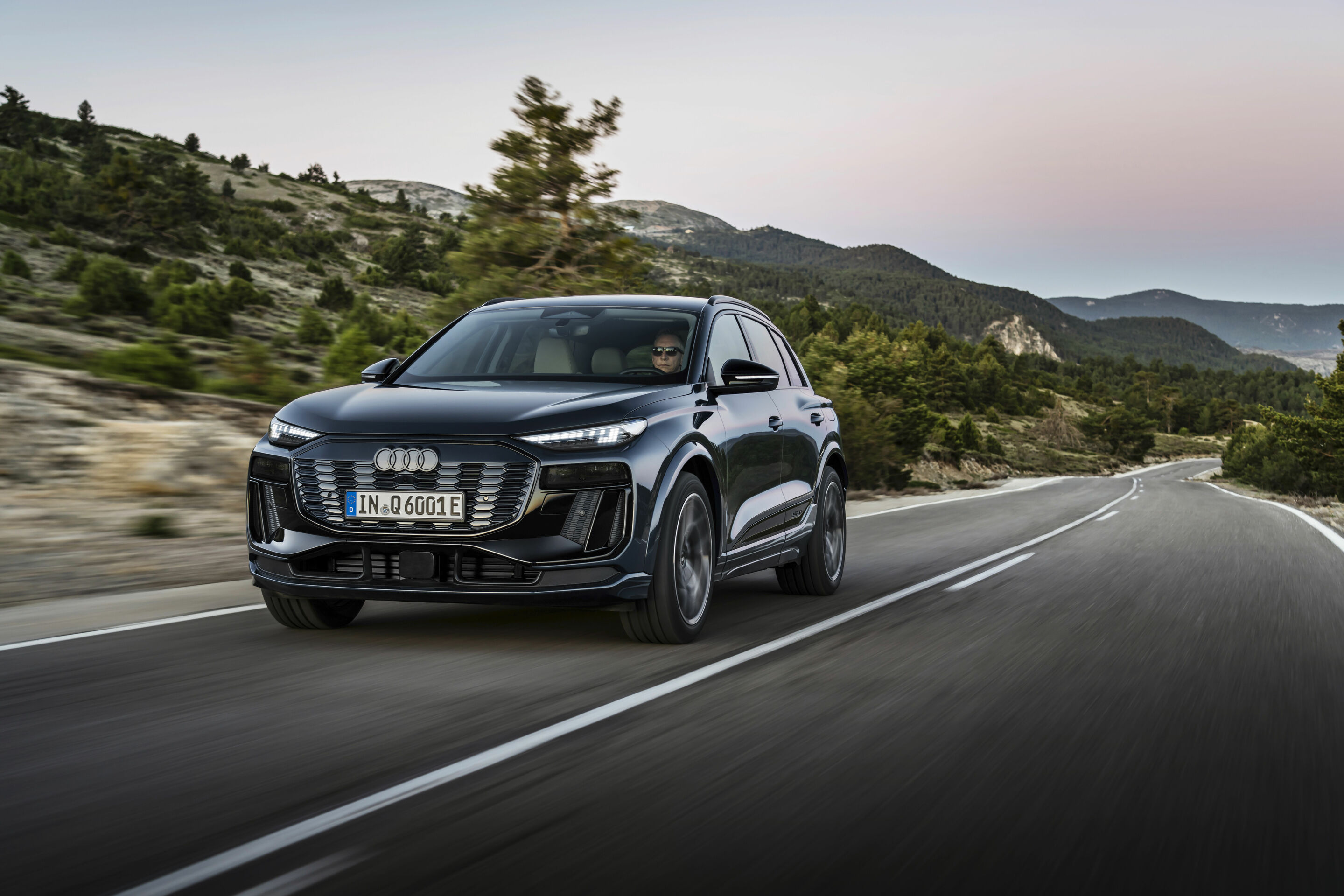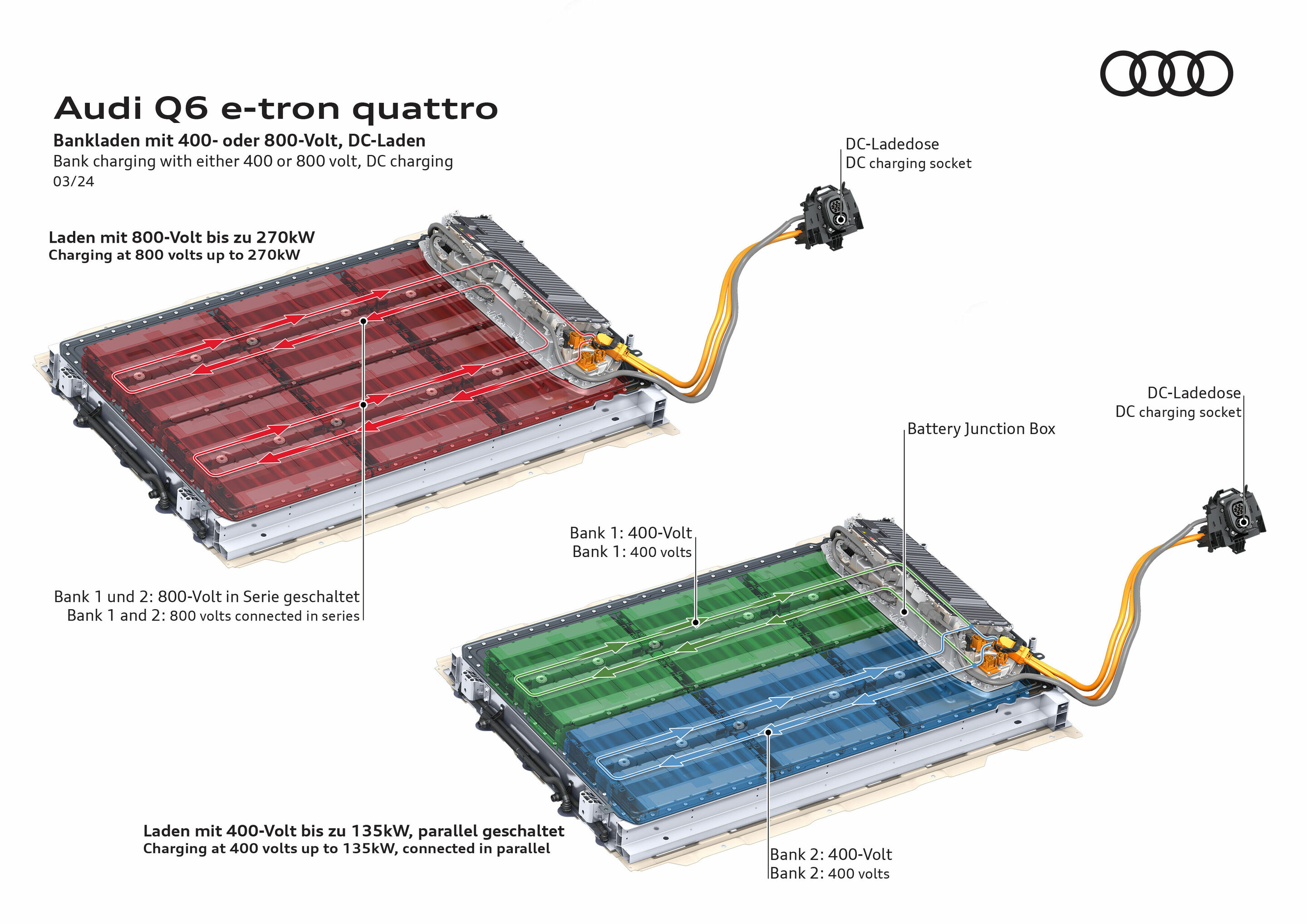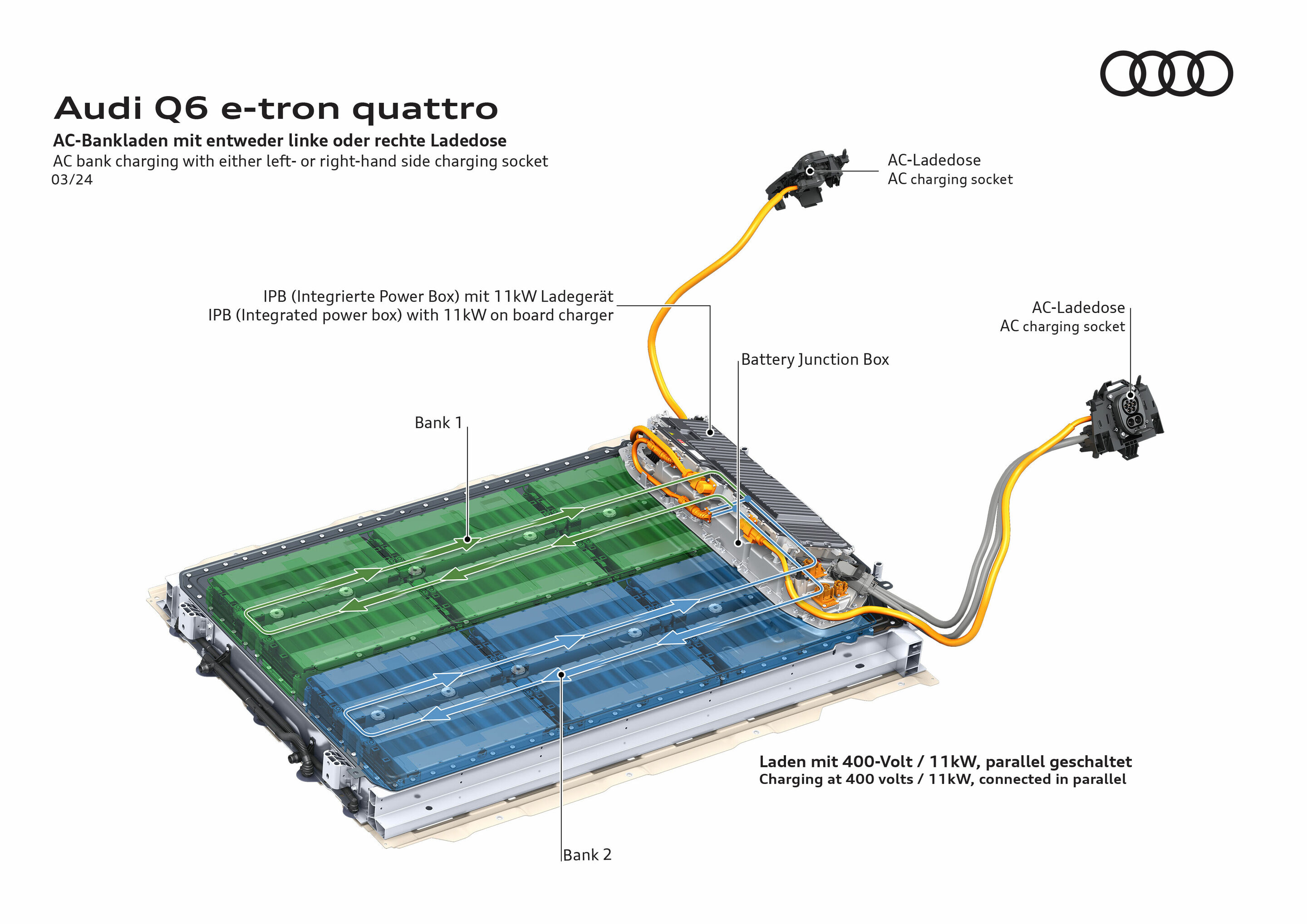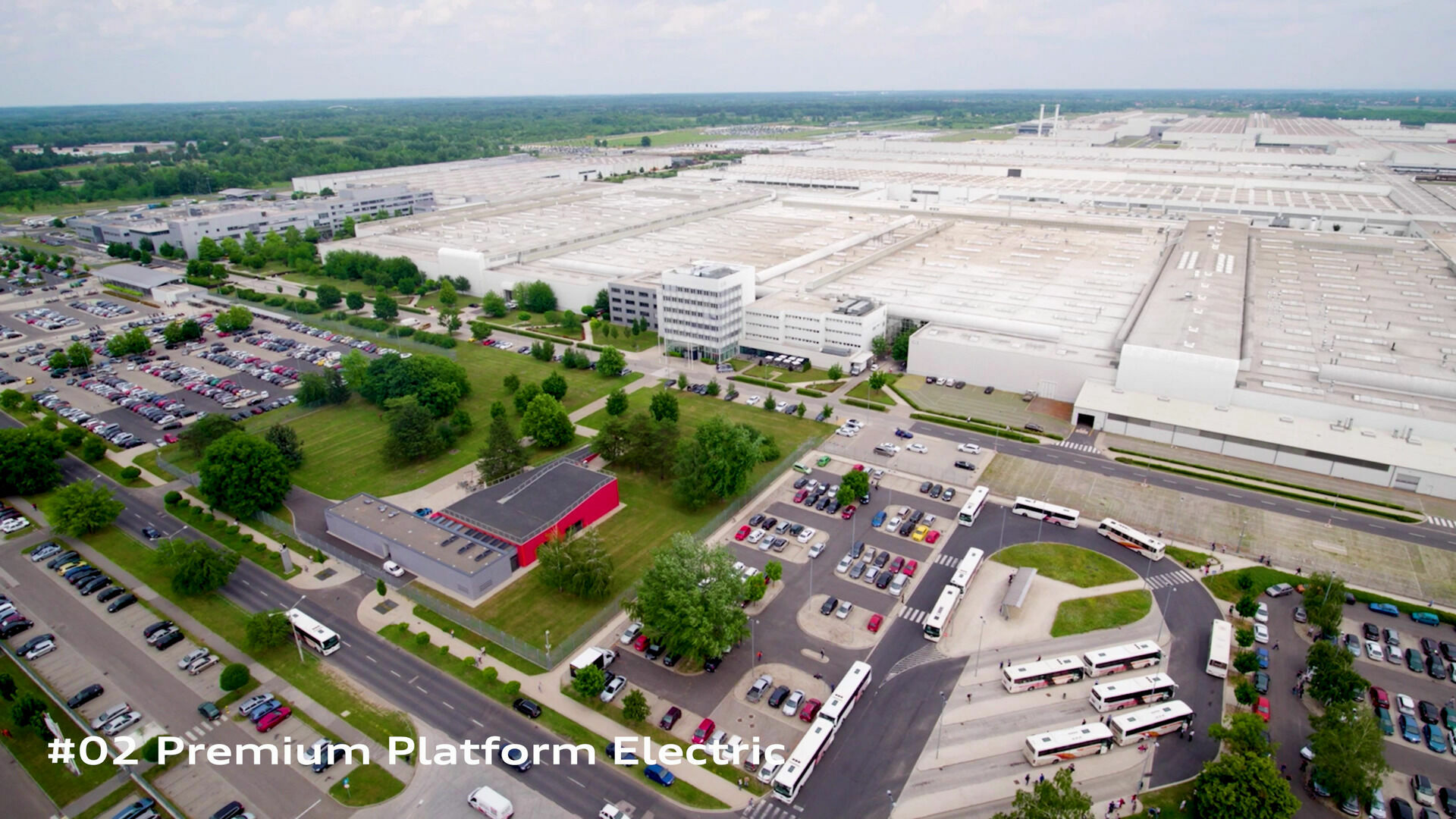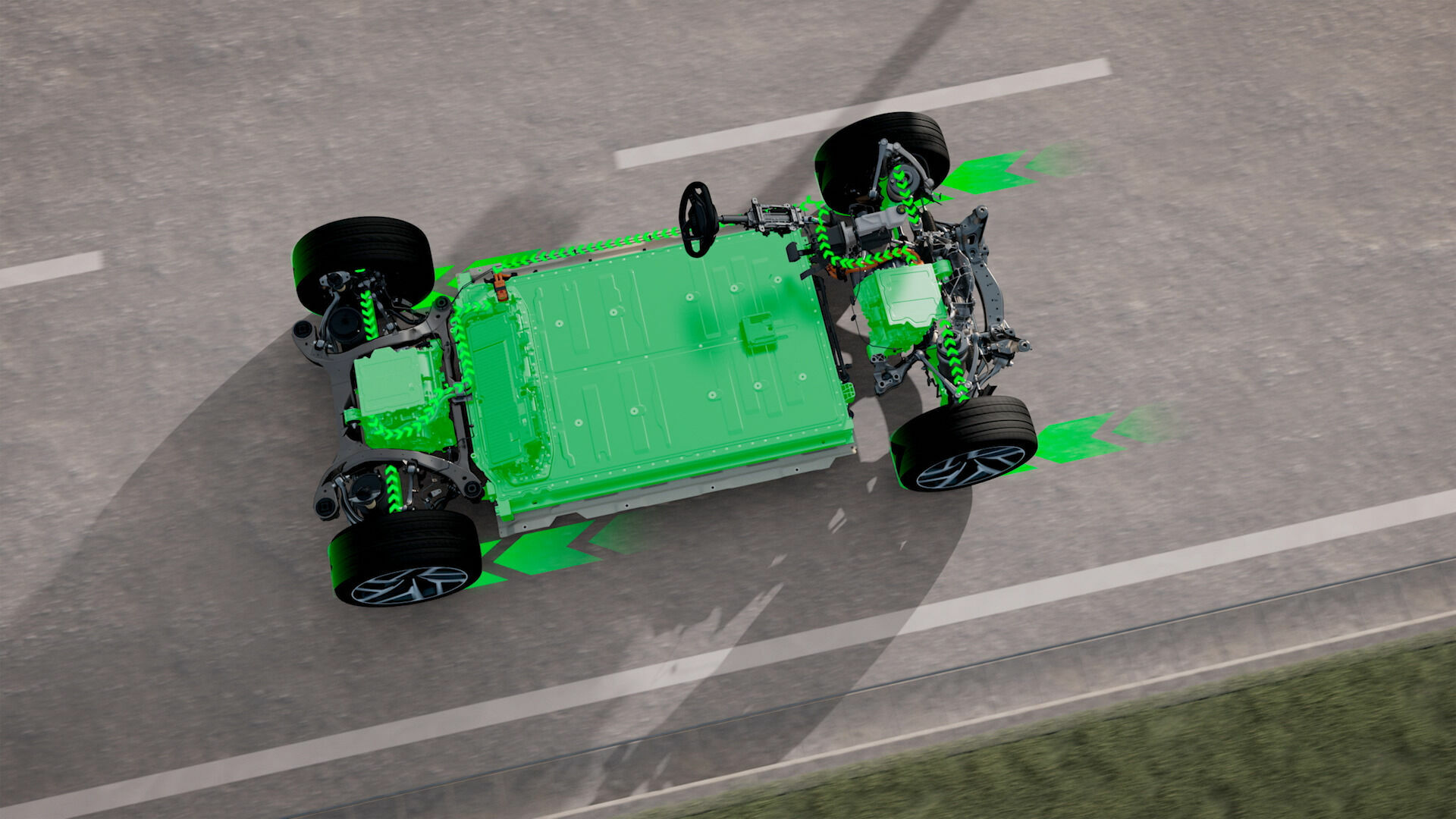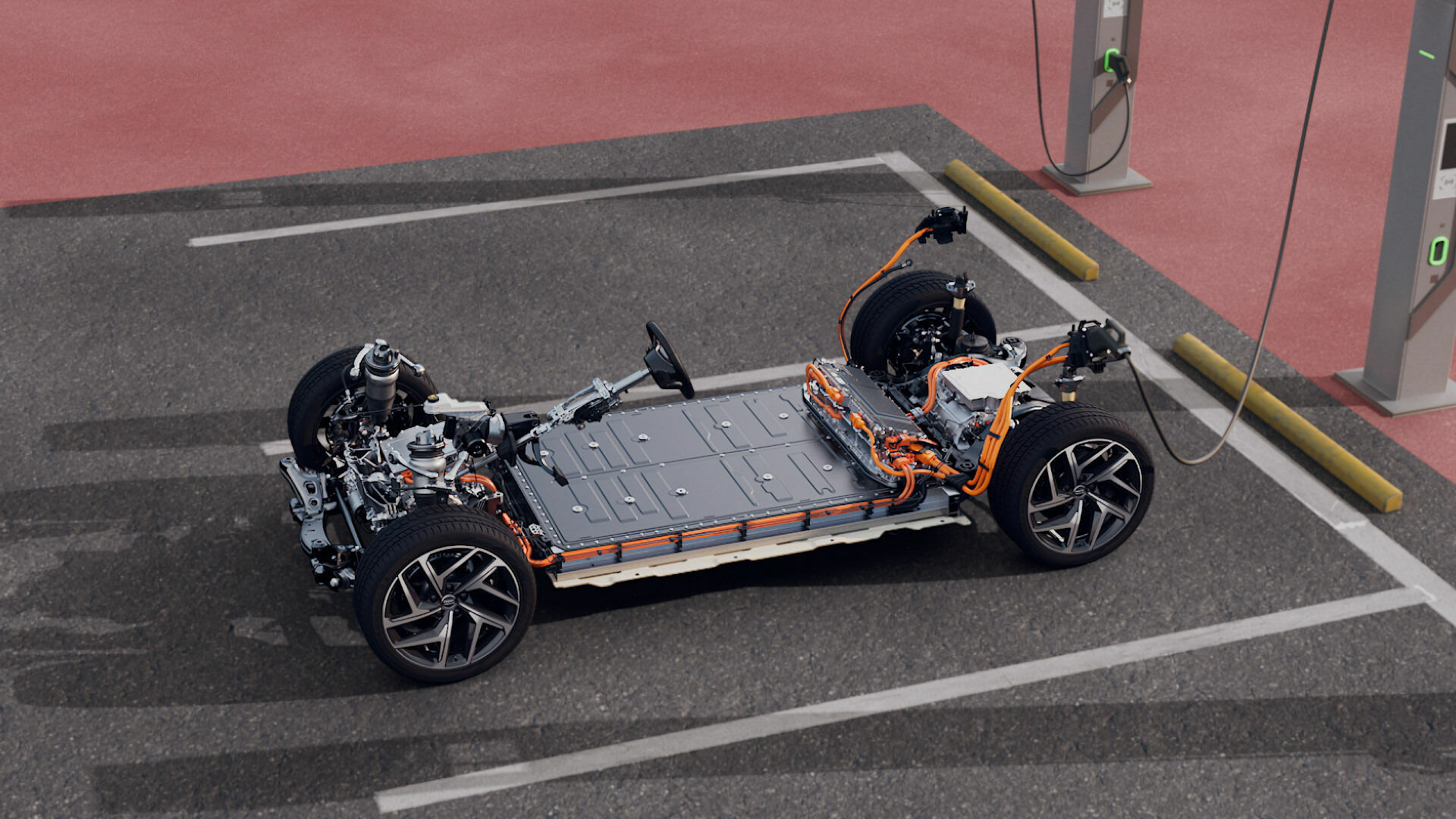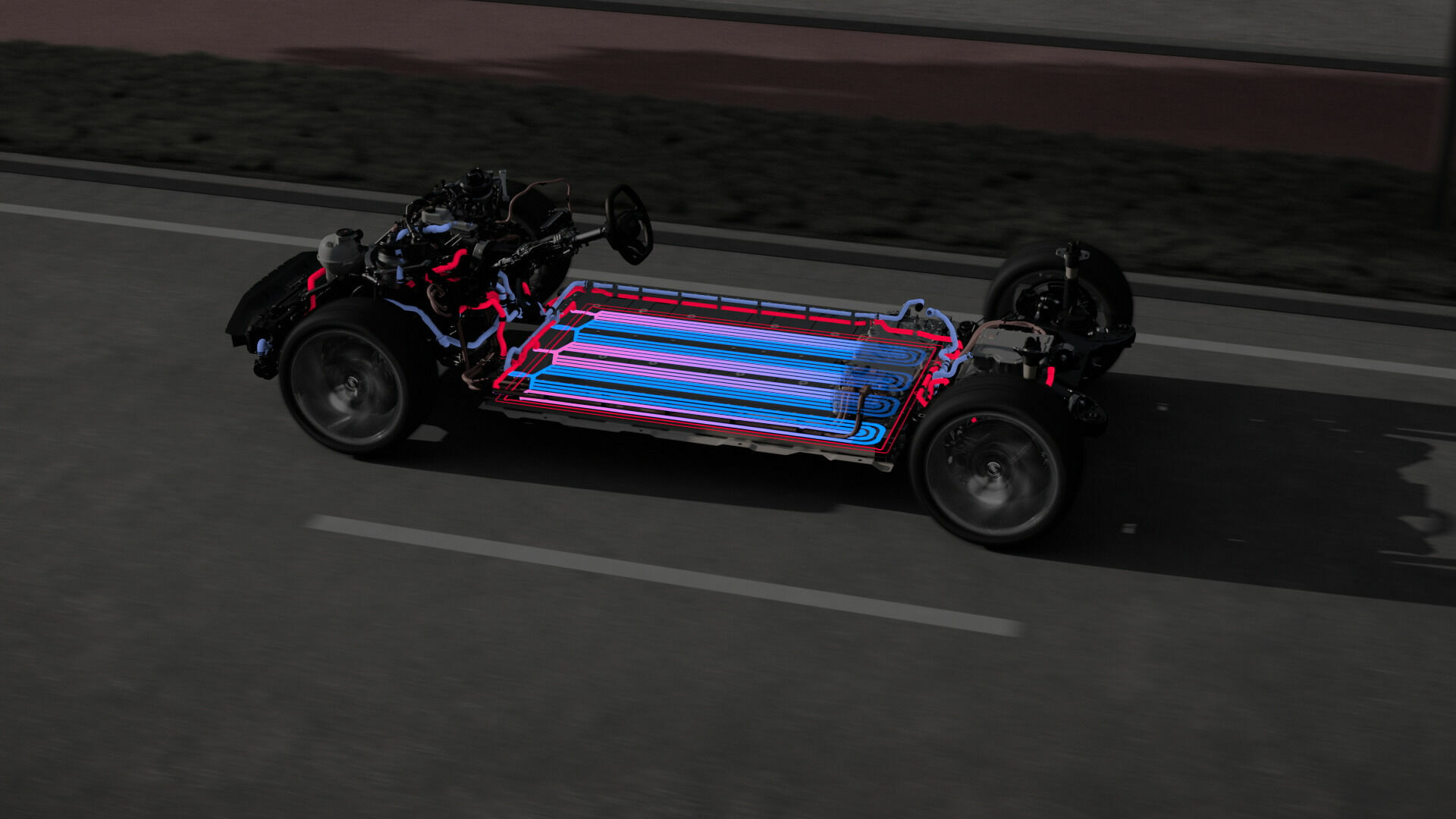Focus on charging performance – the new Premium Platform Electric (PPE)
- Maximum charging power of 270 kilowatts for a large part of the charging time – energy for up to 255 kilometers recharged in only ten minutes
- Standardized communication between charging station and vehicle
- The Europe-wide Audi charging network and Audi charging hub terminals in urban environments offer a dense network of charging points
When designing and developing the high-voltage (HV) battery for the Premium Platform Electric (PPE), Audi prioritized both range and charging performance. Sophisticated thermal management for the battery, an 800-volt electrical system, and a wide range of efficiency measures around the new electric motors make driving and charging a carefree experience. The Audi charging service and, last but not least, the Audi charging hub fast charging network in urban environments, which is becoming increasingly dense, also contribute to this.
With a state of charge (SoC) of about ten percent, just ten minutes at a fast-charging station with a maximum charging power of 270 kW is enough to replenish up to 255 kilometers (158 mi) of range under ideal conditions. An ability that is fundamentally enabled by the 800-volt architecture, the new preconditioned HV battery, and the new predictive thermal management in the PPE. The HV battery in the Audi Q6 e-tron series is made up of twelve modules and has a gross storage capacity of 100 kWh (net 94.9). After market launch, this version will be followed by another variant with ten battery modules and gross storage capacity of 83 kWh. A mere 21 minutes is enough to charge the high-voltage battery from 10 to 80 percent. High charging power over a longer period of time contributes significantly to the customer-friendly charging performance of the PPE-based models. The maximum DC charging capacity of the Audi Q6 e-tron in series production is 270 kW.
For charging stations working with 400-volt technology, bank charging is enabled. Corresponding high-voltage switches in the BMCe (battery management controller) are activated before the charging process begins. This divides the 800-volt battery into two batteries with equal voltage, which can then be charged in parallel with up to 135 kW. If necessary, both halves of the battery are first brought to the same state of charge and then charged in lockstep.
The charging management supports the international charging standard CSS (Combined Charging System). For fast and reliable charging, the HCP 5 high-performance computer manages the process within the new domain computer structure of the E3 1.2 electronic architecture. A communications control unit, referred to as the Smart Actuator Charging Interface Device (SACID), acts as an interface to establish a link between the vehicle and the charging station and transmits the incoming standardized information to the HCP 5 domain computer.
For the PPE models for the European market, Audi is planning DC and AC charging options via a CCS combo connector on the left rear of the vehicle. An additional AC charging connector will be installed on the opposite side of the vehicle. The Audi Q6 e-tron series charges with 11 kW alternating current as standard. This means that an empty battery is recharged overnight. AC charging with 22 kW will be offered as an option at a later date. The charging port caps can be conveniently opened electronically via the MMI display or on the cap itself with gentle pressure on its capacitive center. After the charging cable is removed, the charging port closes automatically.
“Plug & Charge” functionality is included as standard in the Q6 e-tron series. “Plug & Charge” is currently available at IONITY charging stations as well as those of other charging point operators, and will become available at more and more providers. Here it is only necessary to insert the charging cable following a one-time activation in the vehicle. Vehicle and charging station communicate via an encrypted connection. The charging process starts automatically, and billing is carried out via the means of payment saved in the myAudi App, such as a credit card.
Reliable charging infrastructure with Audi charging and Audi charging hubs
Audi customers with electric vehicles benefit from reliable charging infrastructure in the form of the Audi charging service, available since 2023, and the Audi charging hubs, quick-charging stations in urban environments that can be booked in advance. The Audi charging service offers straightforward access to a dense network of over 630,000 charging points in 29 countries within Europe. This includes more than 3,000 high power charging (HPC) stations from IONITY, which allow for rapid charging with up to 350 kW of power, primarily along major traffic routes. Anyone who buys a new fully electric Audi will be able to charge economically from day one – for the first year, Audi will pay the subscription fee of 14.99 euros a month for the Pro plan. A complete overview of all the current plans is available at www.audi.de. The service contracts can be managed conveniently using the myAudi app.
With the recently opened Audi charging hubs in Salzburg (Austria), Munich, and Frankfurt am Main (both in Germany), the network of urban charging stations equipped with second-life batteries as a buffer storage unit has grown to a total of six. Additional locations are planned.
In addition to the first Audi charging hub with a 200-square-meter lounge in Nuremberg, Germany, there are additional compact stations with four high-power-charging (HPC) charging points in Zurich (Switzerland), Berlin (Germany), Salzburg, Munich, and Frankfurt am Main, each of which allow for peak charging power of up to 320 kilowatts.
Intelligent and dynamic load control at the Audi charging hubs ensures efficient use of the existing power grid.
